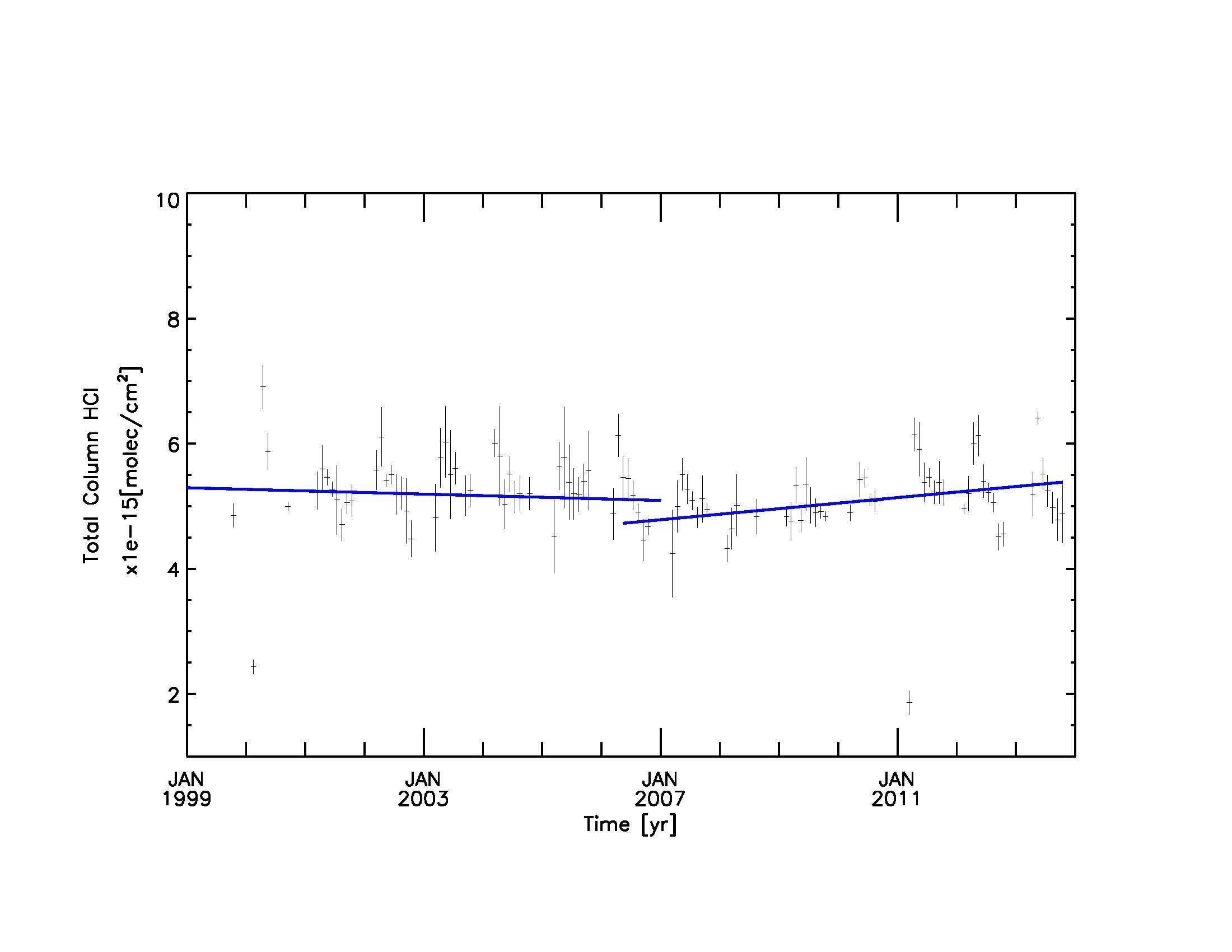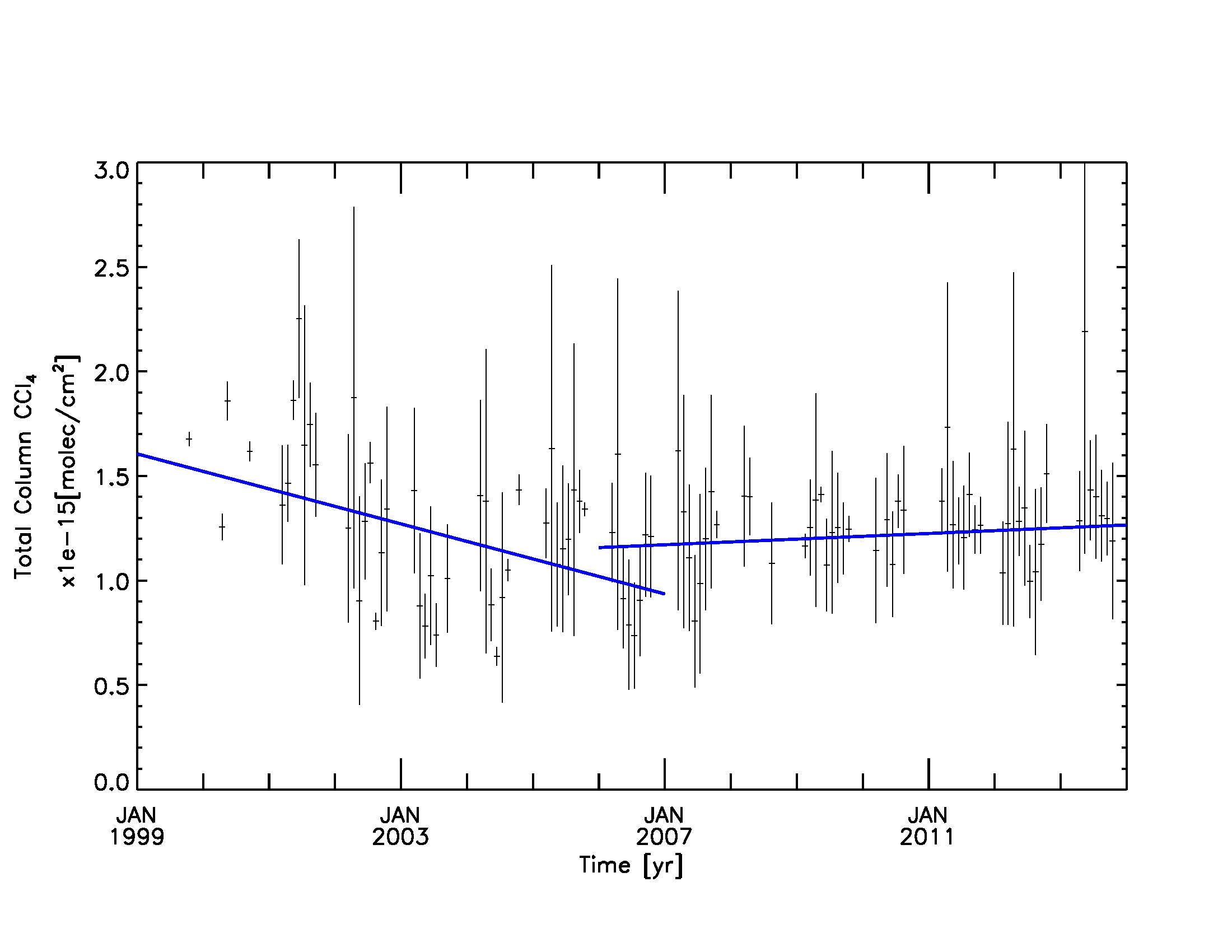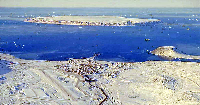Stratospheric chlorine species rising in the Arctic
Current analysis of the FTS (Fourier Transform Spectrometer) NCAR / NDACC (Network for the Detection for Atmospheric Composition Change) data show secular increases in several species. Focusing on HCl, the largest reservoir of chlorine in the stratosphere due to reduced emissions through the 1990's the total column amounts were observed to be decreasing starting in 1997-1998 [Rinsland et al, 2003]. This was until about 2007 when that trend appeared to be reversing. Now with the benefit of several years of observations the secular increase is quite evident. Fig 1. shows monthly averaged HCl total column amounts at Thule Greenland (76ºN, 68ºW). HCl shows an annual cycle dominated by high amounts in the spring due to descent in the polar night. Though this in turn can be greatly decreased by activation of Cl resulting in catalytic ozone destruction. For instance note the very low value in the spring of 2011. The vertical bars are a 1 standard deviation of the measurements taken during the month. Overlaid on the time series are linear trends overlapping in 2006 where the period 2006-2007 appears as an empirical inflection point in the long term trends.

Figure 1. HCl Total column amounts versus time from 1999 - 2013 measured at Thule Greenland. Average monthly mean values where the vertical bars represent a 1 standard deviation of the measurements during the month. Blue lines are linear trends 1999-2007 and 2006-2013 using the less perturbed months of May-October. No observations are made November-February.
From preliminary work this trend appears to increase with North latitude and is likely due to circulation changes, more specifically a slowing in the northern hemisphere, and increasing the accumulation of species like HCl in the polar stratosphere. The linear increase in 2007-2011 time period is 2.5%/year a 4%/year change from the decrease observed over the 1999-2007 time period.
Other species that have a stratospheric loading driven by pole-ward upper atmospheric transport are likely to exhibit an increase as well. Indeed similar trends are seen in total column amounts of HF and HNO3. While these represent more verification of the dynamical nature of the source of the changes in trends they have no effect on Cl loading and subsequent potential O3 loss. This is not the case for all species.
Another Cl containing species, carbon tetrachloride or CCl4 exhibits similar trends that may have different or multiple drivers. Figure 2 is a similar plot as Figure 1 but for CCl4 and shows monthly mean total columns from 1999-2013 at Thule. To note on this plot, CCl4 is close to the detection limit of the measurement technique. This gives rise to larger uncertainty and in turn higher apparent variability seen in the vertical bars. Nevertheless due to limits placed on CCL4 emissions by the Montreal Protocols, the stratospheric loading was seen to be decreasing at Thule at a fairly high rate of 8.4%/year to about 2006-2007. Afterward the trend reverses and begins increasing at a rate of 1.3%/year or a reversal of almost 10%/year. As recently pointed out in Liang at al. where surface measurements and model estimates have been revised up the best estimate lifetime of CCL4 to 35y to accommodate the residual surface amounts. But also current emissions may not be as low as expected (see references in Liang et al). The time lag for surface emissions coupled with fluctuations in transport dynamics can cause short term discrepancies between surface and stratospheric observations. Regardless, the total loading of potential ozone depleting Cl is on the increase in the northern polar stratosphere. In the case of HCl this is believed to be dynamics driven and transient. In the case CCl4 our understanding is not so clear at this time.

Figure 2. Same as for Fig 1 for CCl4.
References
Rinsland, C. P. et al. Long-term trends of inorganic chlorine from ground-based infrared solar spectra: Past increases and evidence for stabilization. J. Geophys. Res. 108, 24235-24249 (2003).
Liang, Q., et al., Constraining the carbon tetrachloride (CCl4) budget using its global trend and inter-hemispheric gradient, Geophys. Res. Lett., 41, 5307–5315, doi:10.1002/ 2014GL060754 (2014)
